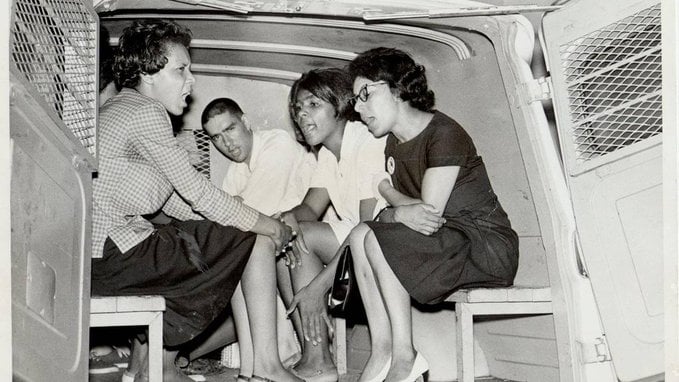Reporters ‘Frequently Sickened’ by Paper’s Past
NABJ Slams Plain Dealer, Post-Gazette
N.Y. Post Photoshop Portrays CEO as Criminal
Homepage photo: Before Fairyland Park was desegregated in 1964, the amusement park was the site of protests. Often, protesters were taken away in police wagons, and later faced charges of disturbing the peace. Before the mid-1960s, The Star tried to ignore away the desegregation issue. {Credit: Kansas City Star)
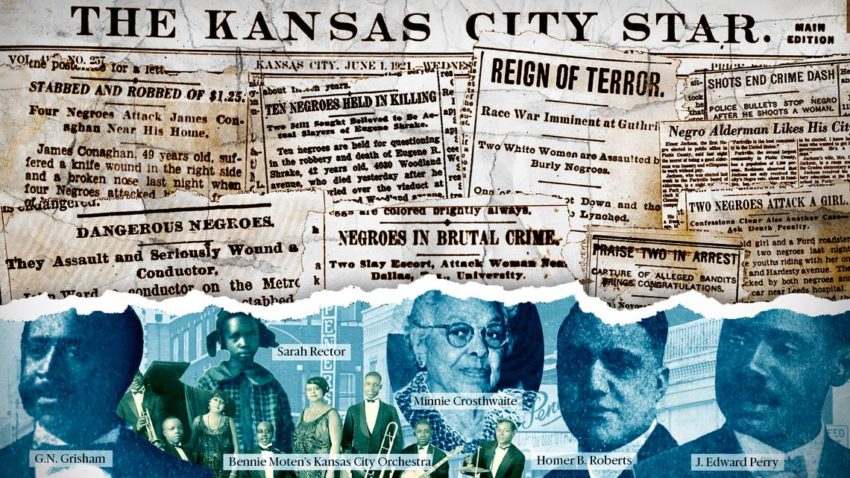
Reporters ‘Frequently Sickened’ by Paper’s Past
The Kansas City Star Sunday published a six-part package apologizing for its racist past, becoming the latest media organization to atone in light of the national reckoning prompted by the killing of George Floyd in May by Minneapolis police.
The steps won praise from the Kansas City Association of Black Journalists, but president Kaci Jones told Journal-isms that the current staff still needs more diversity.
 The news organization’s lead piece, by editor Mike Fannin (pictured), began, “Today we are telling the story of a powerful local business that has done wrong.
The news organization’s lead piece, by editor Mike Fannin (pictured), began, “Today we are telling the story of a powerful local business that has done wrong.
“For 140 years, it has been one of the most influential forces in shaping Kansas City and the region. And yet for much of its early history — through sins of both commission and omission — it disenfranchised, ignored and scorned generations of Black Kansas Citians. It reinforced Jim Crow laws and redlining. Decade after early decade it robbed an entire community of opportunity, dignity, justice and recognition.
“That business is The Kansas City Star.”
Fannin, who is Hispanic and became the top editor in 2008 after heading Star sports and feature departments, told readers, “It is well past time for an apology, acknowledging, as we do so, that the sins of our past still reverberate today.
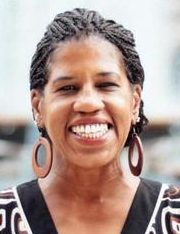 “Inside The Star, reporters and editors discussed how an honest examination of our own past might help us move forward. What started as a suggestion from reporter Mará Rose Williams (pictured) quickly turned into a full-blown examination of The Star’s coverage of race and the Black community dating to our founding in 1880.” Williams, a Black journalist, covers education and wrote two stories in the assessment.
“Inside The Star, reporters and editors discussed how an honest examination of our own past might help us move forward. What started as a suggestion from reporter Mará Rose Williams (pictured) quickly turned into a full-blown examination of The Star’s coverage of race and the Black community dating to our founding in 1880.” Williams, a Black journalist, covers education and wrote two stories in the assessment.
“Today The Star presents a six-part package. It is the result of a team of reporters who dug deeply into the archives of The Star and what was once its sister paper, The Kansas City Times. They pored over thousands of pages of digitized and microfilmed stories, comparing the coverage to how those same events were covered in the Black press — most notably by The Kansas City Call and The Kansas City Sun, each of which chronicled critical stories the white dailies ignored or gave short shrift.
“Our reporters searched court documents, archival collections, congressional testimony, minutes of meetings and digital databases. Periodically, as they researched, editors and reporters convened panels of scholars and community leaders to discuss the significant milestones of Black life in Kansas City that were overlooked or underplayed by The Star and The Times.
“Critically, we sought some of those who lived through the events the project explored. They include victims of the 1977 flood, and students (now long into adulthood) of the illegally segregated Kansas City Public Schools. We talked to retired Star and Times reporters and editors, many of whom, along with other colleagues in their time, recognized institutional inertia, and fought for greater racial inclusion.
“Reporters were frequently sickened by what they found — decades of coverage that depicted Black Kansas Citians as criminals living in a crime-laden world. They felt shame at what was missing: the achievements, aspirations and milestones of an entire population routinely overlooked, as if Black people were invisible.
“Reporters felt regret that the papers’ historic coverage not only did a disservice to Black Kansas Citians, but also to white readers deprived of the opportunity to understand the true richness Black citizens brought to Kansas City. . . .”
The Star project follows similar introspection by the Los Angeles Times in September and just this month by Stuff, the most popular news website in New Zealand, about media portrayal there of the native Maoris.(scroll down).
The advocacy group Free Press has released a 100-page essay, “Media 2070: An Invitation to Dream Up Media Reparations,” calling for “a national reckoning on the history of systemic racism in U.S. media.” It is urging journalists and others to add to its list of examples.

The Star is based in Kansas City, Mo., a city that is 55.2 percent white alone (not Latino or Hispanic), 28.2 percent Black or African American alone, 10.6 percent Hispanic or Latino, 2.7 percent Asian and 0.4 percent American Indian or Alaska Native alone, according to the U.S. Census Bureau’s 2019 population estimates.
The news organization, owned by McClatchy, reported a staff 14.55 percent of color for the 2018 newsroom diversity census of the News Leaders Association. Its newsroom workforce of 110 included 94 who were white, 6 Black, 5 Hispanic and 5 Asian but no Native Americans. [PDF]
It is the dominant print and digital medium in the area, reporting a Monday through Friday print and digital circulation of 83,980 for the six months ending Sept. 30, and a Sunday circulation of 104,061, according to the Alliance for Audited Media.
Jones’ statement said in part, “We appreciate KC Star’s willingness to listen to the concerns of their staff and take tangible steps to address the problems.
“The truth is, KC Star and many other local news outlets are failing the communities they serve daily by a lack of diversity in the newsrooms. Right now, the Kansas City Star only has one Black editor and very few Black writers.”
In October, the Star hired Trey Williams as race and social justice editor. He reported one of the pieces in the project and is the son of Mará Rose Williams. “He has worked as a business reporter in New York, covering Wall Street for MarketWatch, and in Los Angeles, covering Hollywood for The Wrap,” the Star’s Kevin Hardy reported.
Jones also wrote, “We would like to see the publication work with KCABJ and NABJ to make a good faith effort to diversify management positions, the editorial board, the writing staff, and the photographers. We believe the demographics of newsrooms should match the demographics of the communities we serve.
“Furthermore, we hope the Star’s bold admission will remind other local news outlets in television, radio, and digital that now is the time to take a closer look at the harm we have done as an industry and begin to right our wrongs. KCABJ is willing to work with anyone who needs guidance on how to begin to take steps to ensure balanced and equitable coverage within our community.”
- Eric Adler, Kansas City Star: Charlie Parker? Jackie Robinson? For The Star, Kansas City Black culture was invisible
- Eric Adler, Kansas City Star: ‘Brutes’ and murderers: Black people overlooked in KC coverage — except for crime
- Editorial board, Kansas City Star: Sins of omission: Too often, Kansas City Star Editorial Board has been silent on race
- Mike Hendricks, Kansas City Star: When civil rights movement marched forward, The Kansas City Star lagged behind
- Cortlynn Stark, Kansas City Star: J.C. Nichols’ whites-only neighborhoods, boosted by Star’s founder, leave indelible mark
- Mará Rose Williams, Kansas City Star: As floodwater upended Black lives, Kansas City newspapers fixated on Plaza, suburbs
- Mará Rose Williams, Kansas City Star: Kansas City schools broke federal desegregation law for decades. The Star stayed quiet
- Trey Williams, Kansas City Star: Star forms advisory group to ensure fair, inclusive coverage of communities of color
The National Association of Black Journalists’ annual awards ceremony was virtual this year. (video}
NABJ Slams Plain Dealer, Post-Gazette
The Plain Dealer of Cleveland and the Pittsburgh Post-Gazette received Thumbs Down awards Saturday at the National Association of Black Journalists annual awards ceremony, this year held virtually, complete with an after-party.
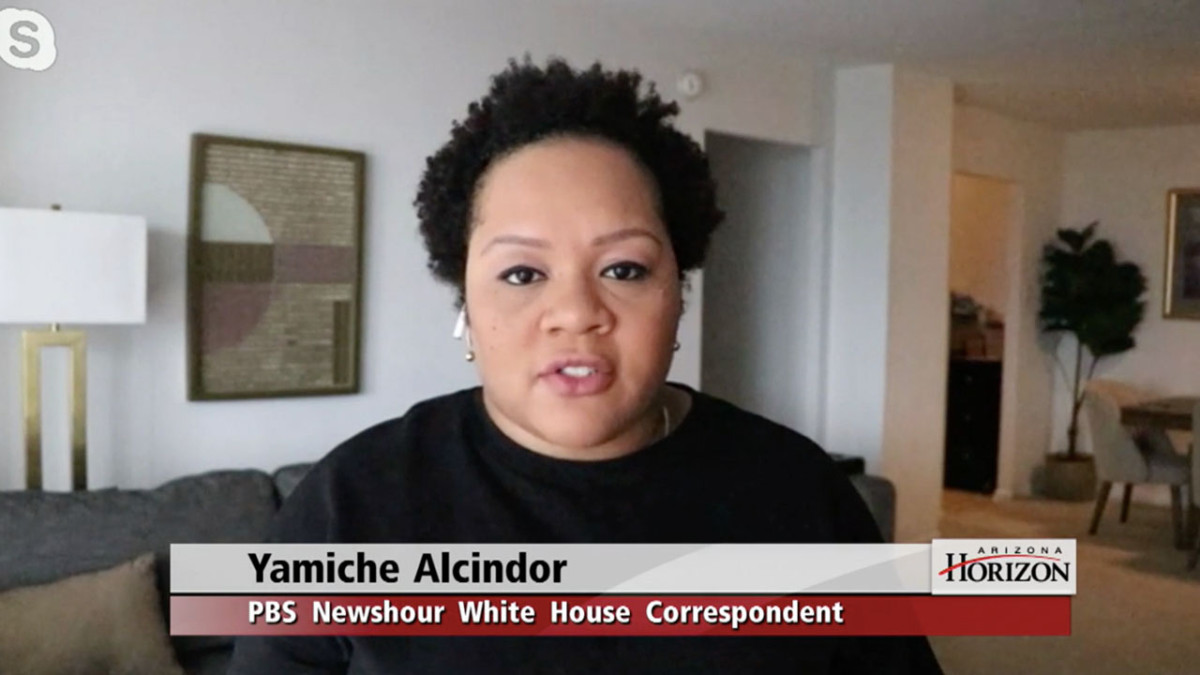 Yamiche Alcindor (pictured), White House correspondent for the “PBS NewsHour” and NABJ’s Journalist of the Year, invoked the deaths by police of George Floyd and Breonna Taylor and declared, “Journalism must take a hard look at racial discrimination and account for how each sector of our society is impacted by the fact that our nation was founded on stolen land and built on the backs of enslaved black people.”
Yamiche Alcindor (pictured), White House correspondent for the “PBS NewsHour” and NABJ’s Journalist of the Year, invoked the deaths by police of George Floyd and Breonna Taylor and declared, “Journalism must take a hard look at racial discrimination and account for how each sector of our society is impacted by the fact that our nation was founded on stolen land and built on the backs of enslaved black people.”
NABJ said 700 people tuned in to the streaming. They saw a polished production co-hosted by Kenneth Moton, co-anchor of “ABC World News Now” and “America This Morning”; a particularly ebullient actress Lynn Whitfield; Michelle Miller, co-host of “CBS This Morning Saturday;” and actress Tichina Arnold. Music was stirringly and soulfully sung by a svelte Jennifer Holliday.
The Thumbs Down Award is given annually “for reporting, commentary or other content found to be racially insensitive, or for practices at odds with the mission of the National Association of Black Journalists.”
An announcer intoned that The Plain Dealer was cited “for job cuts and changes which sparked a huge exodus of nonwhite journalists from their newsrooms (video, 11:49).
“Advance Local, which owns both the Plain Dealer newspaper and cleveland.com, saw at least nine journalists of color quit or laid off at the newspaper amid substantial layoffs.
“Advance Local eventually shut down the newsroom at the Plain Dealer, offering the four reporters who remained at the newspaper jobs at cleveland.com, a newsroom which is not represented by a union. The move seemed aimed at dissolving the Plain Dealer News Guild, which only represents employees at the Plain Dealer.
“In the process, Advance Local created a situation [in which] several journalists of color with long tenures left the organization, robbing the community of coverage by a staff that reflected at least some of the diversity of the city itself.”
A second award went to the Post-Gazette, “for unfairly prohibiting two black journalists from covering protests in the city following the death of George Floyd. Pittsburgh’s largest newspaper prohibited a black reporter, Alexis Johnson, from covering protests in the city following the killing of George Floyd by Minneapolis police. The newspaper’s management declared that Johnson had shown bias by posting a joke on Twitter comparing the extensive litter after a Kenny Chesney concert to the destruction following looting. A white reporter who had posted a disparaging remark on Twitter about a man accused of looting was not barred from covering the protest until the newspaper’s union asked about disparate treatment.
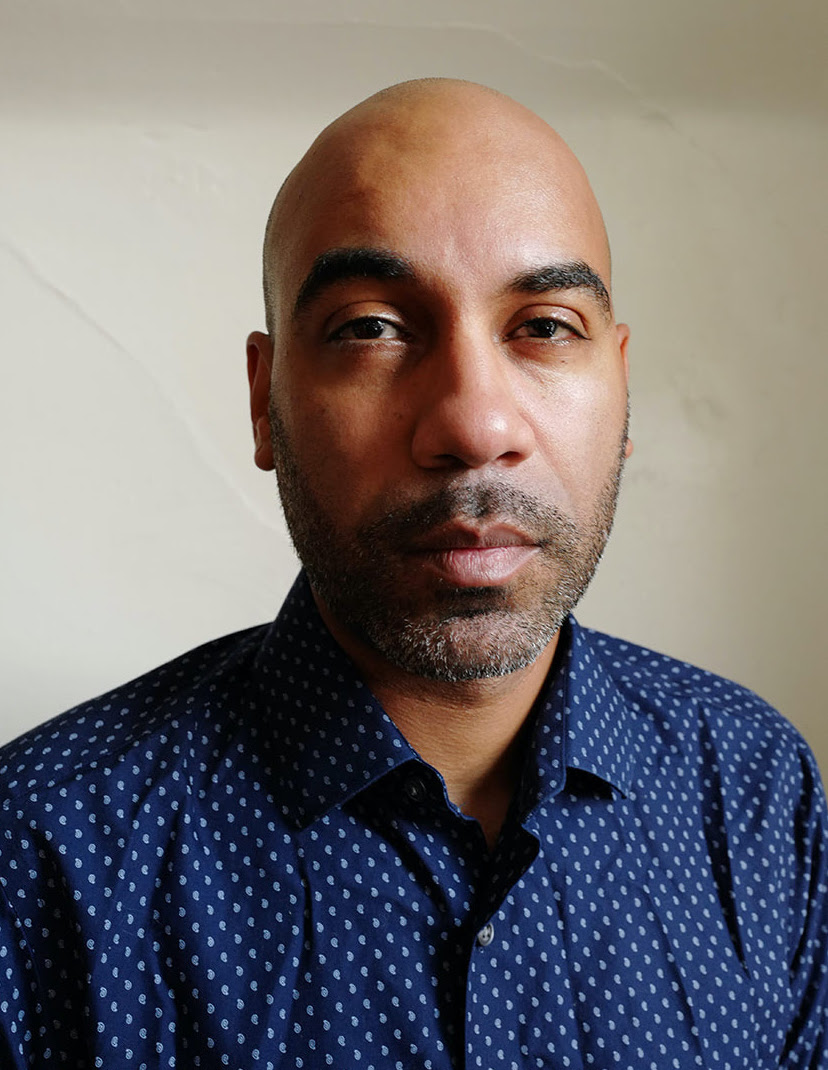 “Editors also sidelined a black photographer, Michael Santiago (pictured), from covering the protest. Of the 140 members of the Newspaper Guild of Pittsburgh, just 13 are African American. The Guild has accused the newspaper of bias at a public press conference, and even a white reporter who was treated less severely says the Black reporters should not have been barred from contributing to coverage.”
“Editors also sidelined a black photographer, Michael Santiago (pictured), from covering the protest. Of the 140 members of the Newspaper Guild of Pittsburgh, just 13 are African American. The Guild has accused the newspaper of bias at a public press conference, and even a white reporter who was treated less severely says the Black reporters should not have been barred from contributing to coverage.”
Santiago left the paper and Johnson sued it. Johnson announced on Twitter in October that she had joined national media outlet Vice News as a correspondent for its TV program “Vice News Tonight.” Santiago now works at Getty Images.
[Full disclosure: This columnist consulted on the Thumbs Down recommendations, as in previous years.]
Alcindor, who just seven years ago was NABJ’s “Emerging Journalist of the Year,” said her career would not be possible without NABJ and that she tried to relate her reporting to everyday people’s concerns.
“This was also a year that put the mission of journalism and our craft in full focus,” she said.
“Journalism must be the medium by which we dissect privilege and expose the inequalities plaguing our world. It must hold political leaders accountable and powerful figures accountable. Journalism must take a hard look at racial discrimination and account for how each sector of our society is impacted by the fact that our nation was founded on stolen land and built on the backs of enslaved black people.
“Journalism must stand up for what is right no matter who and what it makes uncomfortable. And a note to aspiring and young journalists. Don’t let anyone tell you that you don’t look the part, that you’re not confident enough to realize your dreams. Be too busy going after your life’s mission to be distracted by those who question whether you belong. Press forward no matter what and you will make it.”
- Ryan Deto, Pittsburgh City Paper: Alexis Johnson’s lawsuit against the Pittsburgh Post-Gazette could set precedent for media being immune against race-based discrimination (Dec. 2)
- Mattie Kahn, Glamour: Yamiche Alcindor Wants America to See Its Flaws (Dec. 4)
- National Association of Black Journalists: Salute to Excellence winners
- Rob Taylor Jr., New Pittsburgh Courier: Black photographer Michael Santiago leaves the Post-Gazette (June 17)
- Courtney Vinopal, “PBS NewsHour”: WATCH: Yamiche Alcindor moderates panel on 2020 voting and goals for reform
Thanks for this @nypost, very meaningful… https://t.co/3dKpYD7jeg pic.twitter.com/udNPSdJAmz
— Wes Moore (@iamwesmoore) December 19, 2020
N.Y. Post Photoshop Portrays CEO as Criminal
“The New York Post found itself in hot water once again this weekend for photoshopping the image of a Black CEO to make him look like a criminal,” Zachary Petrizzo reported Saturday for Mediaite.
“Wes Moore, the CEO of NYC charity foundation Robin Hood, called out the tabloid for casting him as a ‘criminal’ in art that accompanied a story that had nothing to do with him. Moore reasoned that the Post confused his charity with a stock trading app bearing a similar name.
“ ‘Today @nypost photoshopped me to look like a “criminal” in a story that had nothing to do with me. They confused @RobinhoodApp & @robinhoodnyc,’ Moore tweeted on Friday. ‘I’m sure retractions are forthcoming, but even if your basic facts had not been wrong, know that trafficking in cheap tropes is harmful.’ ”
“On Saturday, the Post ran a correction in the business section, where the article originally ran.
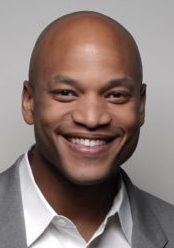 “On Friday, an illustration for a story in the business section about the Robinhood stock-trading app mistakenly used the face of Wes Moore (pictured), the CEO of the Robin Hood Foundation, a New York City charity. The Post regrets this error,’ the correction stated.
“On Friday, an illustration for a story in the business section about the Robinhood stock-trading app mistakenly used the face of Wes Moore (pictured), the CEO of the Robin Hood Foundation, a New York City charity. The Post regrets this error,’ the correction stated.
“The Post reporter who wrote the story, Thornton McEnery, issued a public apology on Twitter to Moore, noting he was not aware the art would accompany the story. . . .”
Moore is a U.S. Army combat veteran and Rhodes Scholar. A Baltimore native, he is the author most recently of “Five Days: The Fiery Reckoning of an American City,” (with Erika L. Green) about the 2015 uprising in Baltimore after the death of Freddie Gray. He also wrote “The Other Wes Moore” and “The Work.”
Another Black Journalist Named Top Editor
Dec. 18, 2020
Updated Dec. 19
Christie Chosen at Gannett’s Palm Beach Post;
Oklahoman Names Clytie Bunyan Interim Editor
April Ryan Leaves AURN for New Grio TV
Natives Cry ‘Happy Tears’ Over Cabinet Pick
Dow Jones Fund to Seek More Black, Brown Men
News Media Want Livestreaming in Floyd Case
James Blue of PBS to Lead Smithsonian Channel
U.S. House on Record for Media Diversity
Stephen A. Smith to Host ‘Stephen A’s World’
Juan Williams’ Lessons From Catching COVID-19
H.R. Professional Succeeds Days in Philadelphia
Allen Howard Dies, Pioneering Cincinnati Reporter
Podcast by and for Women of Color Taking Off
Record Number of Journalists Jailed Worldwide
Short Takes
Support Journal-ismsIn this 2017 video from Cox Media Group, which then owned the Palm Beach Post, Rick Christie says he treasures his time in the community.
Christie Chosen at Gannett’s Palm Beach Post;
Oklahoman Names Clytie Bunyan Interim Editor
The underwhelming number of Black top editors of mainstream newspapers inched forward for the second time in two weeks Thursday when Rick Christie, editorial page editor of the Palm Beach (Fla.) Post, was named executive editor of the Gannett-owned paper.
That was followed Friday by the appointment of Clytie Bunyan as interim editor of The Oklahoman in Oklahoma City, also owned by Gannett.
Last week, Monica R. Richardson, senior managing editor of the Atlanta Journal-Constitution, was named executive editor of McClatchy-owned Miami Herald. The company noted that she will be the first Black top editor in the Herald’s 117-year history.
In August, Gannett announced a broad initiative to make its workforce as diverse as the country by 2025 and to expand the number of journalists focused on covering issues related to race and identity, social justice and equality.
Gannett also said it planned to increase by 30% the share of BIPOC (Black, Indigenous, people of color) in leadership positions.
A July listing compiled by the National Association of Black Journalists showed only 11 Black top editors of general-circulation newspapers. According to the most recently available data, there were 1,279 daily newspapers in the United States in 2018.
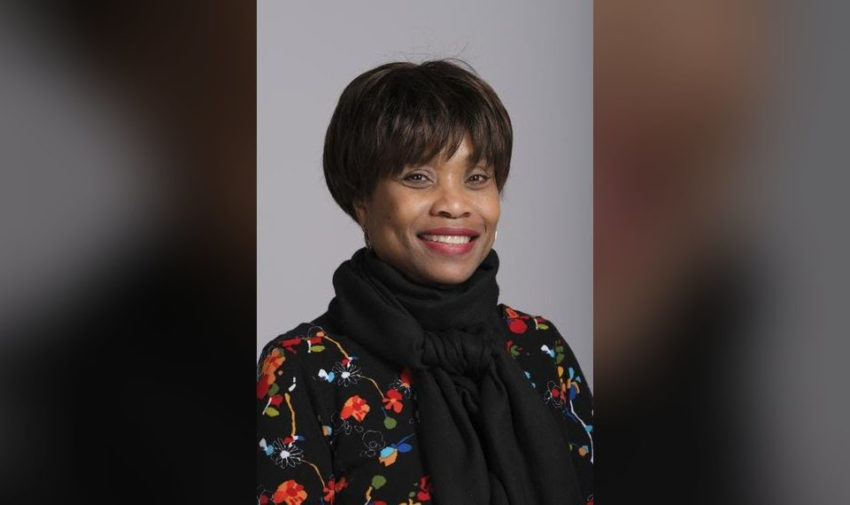
Clytie Bunyan said, “The well-being of all Oklahomans is important to me, so I look forward to building relationships with new audiences so we can improve how we bring stories that matter to you.” She moved to Oklahoma from Trinidad in the 1980s. (Credit: The Oklahoman)
The Oklahoman wrote, “Bunyan joined The Oklahoman staff in 1989, and most recently has served as director of diversity and engagement since August, focusing on increasing diversity in coverage and audience, and growing digital subscriptions.”
“I’m thrilled to turn over the reins to Clytie. She’s dedicated to our community and a first-rate journalist. Clytie is fair-minded, loyal to readers and a long-standing leader in our newsroom,’ Kelly Fry, who is retiring as editor and publisher of The Oklahoman, said in the story.
“Bunyan, 59, has held a variety of other leadership roles at The Oklahoman, including director of business and lifestyles, and business editor. She was inducted into the Oklahoma Journalism Hall of Fame earlier this year.
“Among her several roles in the newsroom, she has organized The Oklahoman’s intern program for several years, as well as newsroom engagement events, including candidate forums and public discussions on the state’s skills gap, mental health, addiction and downtown Oklahoma City development. She also has been responsible for coordinating publication of niche products and special sections. . . .”
Carol Rose reported Thursday for the Palm Beach Post, “Rick Christie grew up reading and delivering The Palm Beach Post. Now, after a 38-year career in journalism that most recently saw him as the paper’s editorial page editor, he will take over the reins as executive editor of what he considers his hometown paper,”
“Christie, who replaces Nick Moschella as executive editor, will become the first Black person to lead the publication in its 104-year history.”
Rose also wrote, “Christie, 60, first worked at the Post, then a Cox Newspapers publication, as a business writer in the 1980s, where he covered banking and finance. He left to report on banking, real estate and the economy for The Wall Street Journal, and later as a senior business writer and assistant city editor for the Miami Herald.
“He returned to the Post as state editor in the early 1990s before moving to the Cox Washington Bureau as an assistant national editor and later became the foreign editor. In the latter role, he coordinated coverage in six foreign bureaus, including Beijing, Moscow, Jerusalem and Mexico City.
“Christie rejoined the Post in 2002 as assistant managing editor for business news, and was breaking news editor and public affairs editor before becoming editorial page editor in 2013.”
In 2018, when the newspaper was sold to GateHouse, which later merged with Gannett, the Palm Beach Post reported a daily print and paid digital circulation of “nearly 80,000 and 102,000 on Sundays.”
The same year, audited circulation numbers published by The Oklahoman showed that the newspaper had an average paid circulation of 92,073, which included both print and electronic copies. However, the newspaper was planning to trim its circulation in unprofitable areas.
Palm Beach editor Moschella wrote in August, “According to an analysis by Gannett, parent company of The Palm Beach Post and Palm Beach Daily News, our Newspaper Designated Market (NDM) is 55.6 percent white, 21.9 percent Hispanic, 17.7 percent Black and 2.6 percent Asian.
He also wrote, “To use [a] golf reference, we are deep in the rough. Our combined staff of 74 journalists is 79.7 percent white, 10.8 percent Hispanic, 8.1 percent Black with no Asians.”
At the Oklahoman, David Dishman wrote, “Oklahoma is home to a rich diversity of people, and all benefit from the kind of truthful news and information we can provide. . . .
“Overall our newsroom is more than 80% white. Only about 5% of our newsroom is Hispanic or Latino, while nearly 13% of our community is. We currently have no Asian representation in our newsroom despite nearly 3% of people in our surrounding area identifying as Asian.”
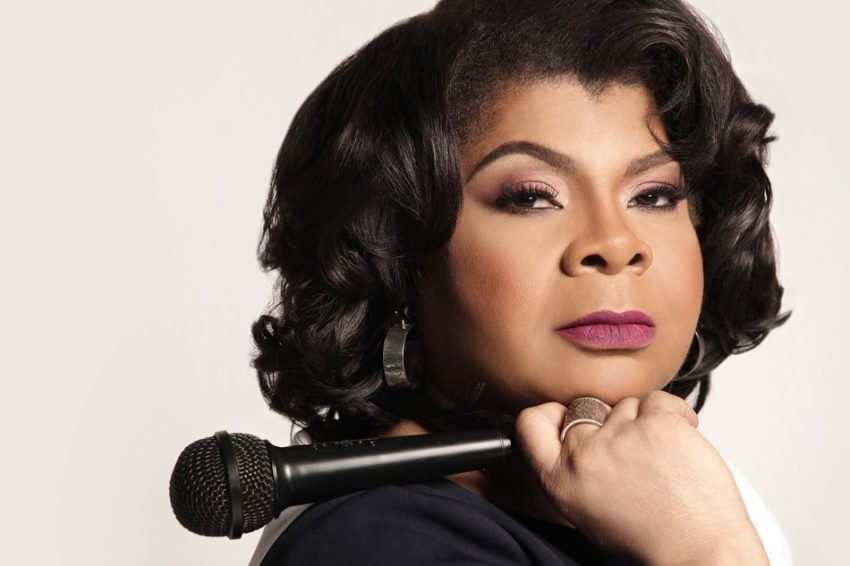
April Ryan Leaves AURN for New Grio TV
After 24 years, veteran White House correspondent April D. Ryan is leaving American Urban Radio Networks to sign with Byron Allen’s new over-the-air 24/7 broadcast television network.
Ryan will fill the dual roles of White House correspondent and Washington, D.C. bureau chief, the Allen Media Group announced Wednesday. It noted that when Ryan begins her new position on Jan. 4, Joe Biden will be the fifth U.S. president Ryan has covered.
She will continue as a frequent contributor to CNN.
The news release adds, “TheGrio.TV television network officially launches on January 15, 2021 – the start of the Martin Luther King, Jr. holiday weekend. The newly-rebranded broadcast television network TheGrio.TV will feature African American-focused content reaching over 100 million U.S. households via over-the-air broadcast television stations, cable/telco/satellite platforms, and free digital streaming.
“TheGrio.TV recently added broadcast television station subchannel distribution with Fox owned-and-operated television stations in eleven major markets: New York, Los Angeles, Chicago, Philadelphia, Dallas, San Francisco, Houston, Atlanta, Phoenix, Minneapolis, and Orlando. These eleven U.S. television markets represent 29.6 percent of general market households and 36.3 percent of African-American households.”
Without substantiation, the news release also describes The Grio as “the largest employer of African-American journalists.”
AURN describes itself as “the # 1 Nielsen rated national audio network company reaching African Americans. With over 25 million weekly listeners.“
- BlackNews.com: 3 Black Fathers Launch Roku Channel With 13 Shows to Address the Lack of Diversity in News Programming
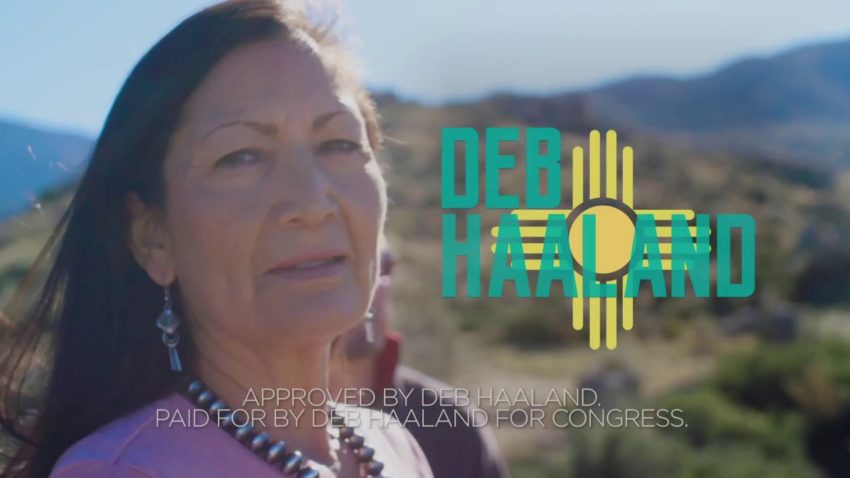 President-elect Joe Biden’s choice for secretary of the interior.
President-elect Joe Biden’s choice for secretary of the interior.Natives Cry ‘Happy Tears’ Over Cabinet Pick
“Native people are crying happy tears — on their apartment floor, on social media, in their cars — over Rep. Deb Haaland’s selection as head of the Interior Department,” Indian Country Today reported Thursday.
“This decision is historic for many reasons. One, a Native person in a Cabinet-level position. Two, it’s a win for Native women across Turtle Island. Three, Nick Tilsen, CEO and president of NDN Collective, sums up:
“ ‘Haaland’s appointment gives us a voice in a Department that has long been responsible for our exploitation,’ Tilsen tweeted.
“Haaland, Pueblos of Laguna and Jemez, was reelected in November for a second term to represent New Mexico. In 2018, she made history as one of the first two Native women elected to Congress.
“Now, she’s a Senate confirmation away from being the first Native to lead the Interior Department.
“ ‘I can’t stop crying, happy tears,’ tweeted Minnesota Lt. Gov. Peggy Flanagan, White Earth.
“Indigenous leaders and groups have been rallying behind Haaland for the position for weeks. On Thursday, they celebrated. . . .”
-
Nicquel Terry Ellis, CNN: Cleveland’s plans to drop ‘Indians’ from team name is a welcome change but it’s long overdue, Native Americans say
-
Mike Oz, Yahoo Sports: Cleveland Indians owner speaks out on name change: ‘The name is no longer acceptable in our world’
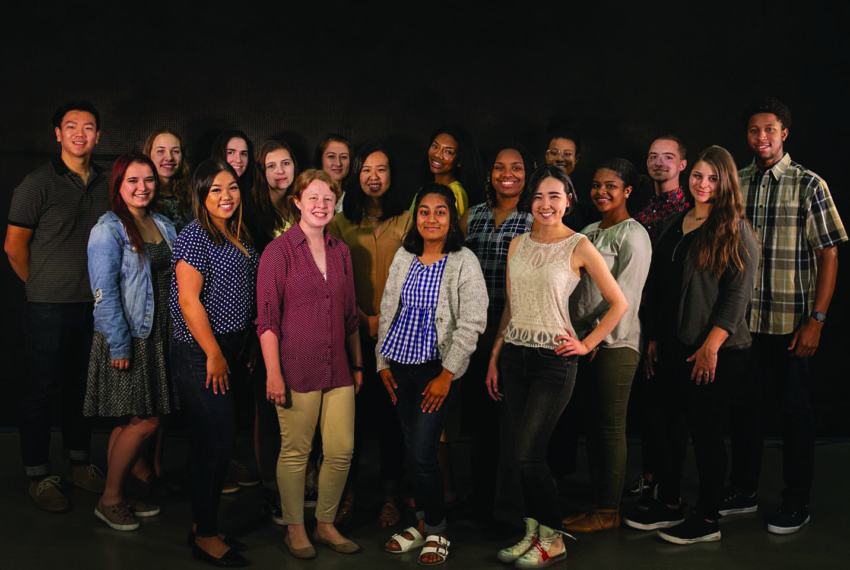 Dow Jones News Fund interns from 2019 (Credit: Dow Jones News Fund)
Dow Jones News Fund interns from 2019 (Credit: Dow Jones News Fund)Dow Jones Fund to Seek More Black, Brown Men
Shirley Carswell, the former Washington Post deputy managing editor who is newly named executive director of the Dow Jones News Fund, says she’d like to focus on “the lack of black males. Black and brown males, actually, who come through the program.
“In recent years, it seems like those numbers have dropped. and that’s not unusual because that’s the way journalism schools are, for the most part,” Carswell told the Journal-isms Roundtable (video, 25:26) on Sunday.
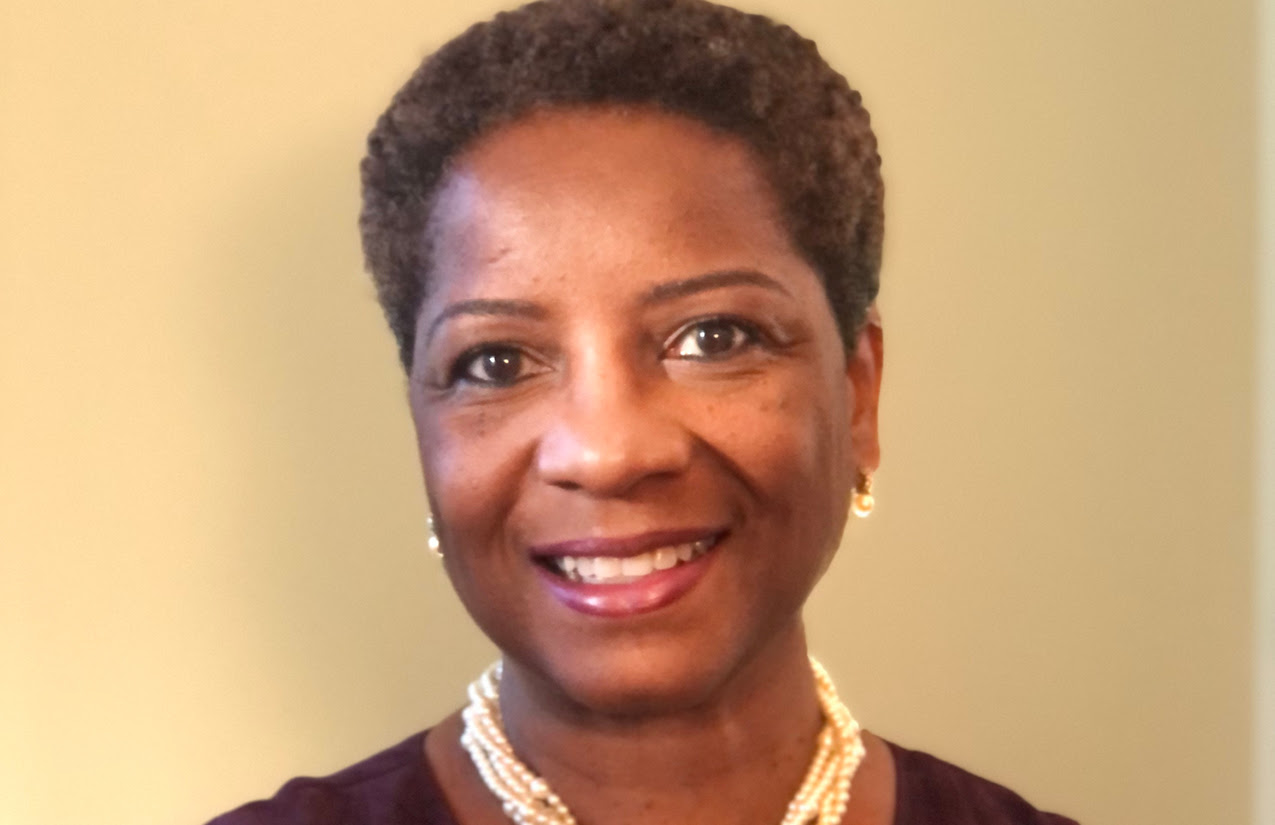 Carswell (pictured) was named Dec. 9 to succeed Linda Shockley, who announced her retirement in August. Carswell begins Jan. 4.
Carswell (pictured) was named Dec. 9 to succeed Linda Shockley, who announced her retirement in August. Carswell begins Jan. 4.
“For the past seven years, she has taught at Howard University’s Cathy Hughes School of Communications, where she has helped prepare hundreds of young people for successful careers in the news media,” the release also said of Carswell.
-
ACES: The Society for Editng: Three Editors Announced as First Recipients of Holden Diversity Fellowship

From left: Former Minneapolis police officers Derek Chauvin, J. Alexander Kueng, Thomas Lane and Tou Thao. (Credit: Hennepin County Sheriff’s Office)
News Media Want Livestreaming in Floyd Case
“A coalition of local and national media companies is opposing a request by prosecutors in the George Floyd (pictured below) case to limit trial access to closed-circuit TV viewable only in the courthouse,” Chao Xiong reported Monday for the Star Tribune in Minneapolis.
“The coalition’s memorandum filed Monday asks Hennepin County District Judge Peter Cahill to proceed with his plan to livestream the proceedings outside of the courthouse in order to provide courtroom access mandated by the constitution while keeping people safe from COVID-19.
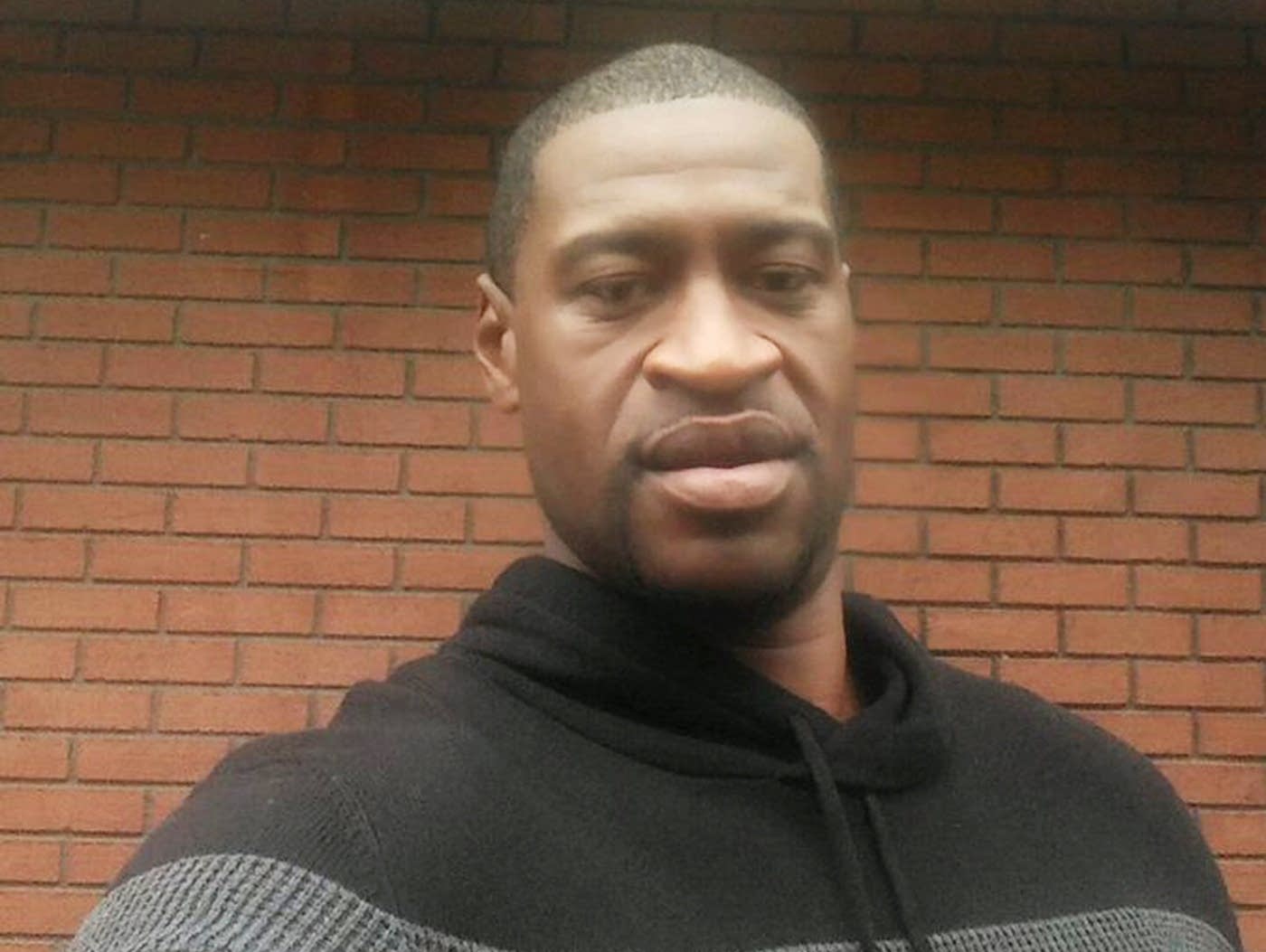 “The filing is in response to a Nov. 25 motion filed by Attorney General Keith Ellison’s office that asked Cahill to instead broadcast the trial via closed-circuit TV in an overflow courtroom with limited seats.
“The filing is in response to a Nov. 25 motion filed by Attorney General Keith Ellison’s office that asked Cahill to instead broadcast the trial via closed-circuit TV in an overflow courtroom with limited seats.
“Cahill issued an unprecedented order on Nov. 4 allowing camera access and livestreaming because the pandemic would allow little, if any room, for the public or media to observe from inside the trial courtroom.
” ‘No court has ever faced the challenges this Court is facing and no court has ever tried to address those challenges as this Court proposes,’ said the coalition’s memorandum. ‘Given the circumstances, the Court’s accommodation is what the Constitution requires.’
“The coalition is comprised of the Star Tribune, Minnesota Public Radio, The Associated Press, all four local TV affiliates and their parent companies, The Wall Street Journal, The New York Times Company, Court TV, the Minnesota Coalition on Government Information and the Silha Center for the Study of Media Ethics and Law.
“Attorneys for three of the four defendants in the case — former Minneapolis police officers Derek Chauvin, J. Alexander Kueng and Tou Thao — also filed memorandums Monday opposing the prosecution’s proposal. . . .”
-
Carly Stern, Nieman Storyboard: How an editor guided coverage of racism in the life and death of George Floyd (Dec. 2)

James Blue speaks to the Journal-isms Roundtable in February 2016 after producing the PBS Democratic presidential debate at the University of Wisconsin-Milwaukee. Blue might have been the only Black journalist to have produced one of the debates in that cycle (Photos by Sharon Farmer/sfphotoworks).
James Blue of PBS to Lead Smithsonian Channel
“ViacomCBS’ MTV Entertainment Group (formerly Entertainment & Youth) has named PBS NewsHour and former Nightline producer James F. Blue III as SVP, Head of Smithsonian Channel,” Denise Petski reported Friday for Deadline. “Blue will also oversee News and Factual Unscripted content for MTV Entertainment’s portfolio of brands across streaming, linear and digital . . .
“Working with Smithsonian Institution, Blue will lead, expand and diversify Smithsonian Channel’s content offerings to build on its momentum and support the Institution’s efforts to engage, inspire and educate. His oversight will also include content creation and all related experiential and event programming.”
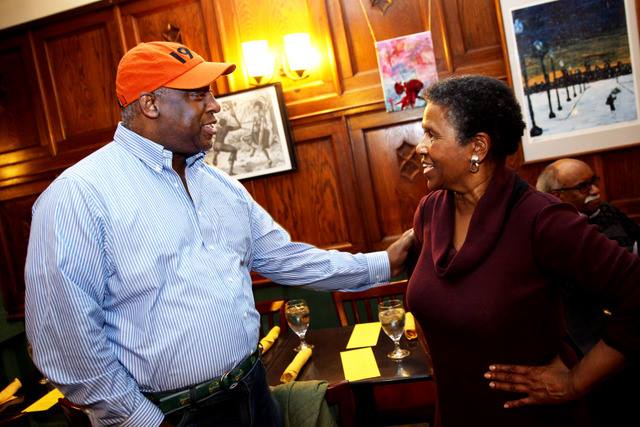 Blue (pictured with journalist Athelia Knight) said he looked forward “to leveraging my expertise and experience to help shape and implement MTV Entertainment’s strategic vision for Smithsonian and other news, factual and non-fiction content across, and even beyond, the Group’s platforms.”
Blue (pictured with journalist Athelia Knight) said he looked forward “to leveraging my expertise and experience to help shape and implement MTV Entertainment’s strategic vision for Smithsonian and other news, factual and non-fiction content across, and even beyond, the Group’s platforms.”
Petski continued, “Most recently, Blue served as the special projects and senior producer of PBS NewsHour where he oversaw NewsHour specials and served as the executive producer’s primary deputy for the daily broadcast. He also managed several NewsHour reporting initiatives, including Searching for Justice, Race Matters, and Chasing the Dream. During the 2012 election cycle, Blue was an executive producer for BET Networks’ political broadcasts that included exclusive interviews with President Barack Obama and First Lady Michelle Obama as well as extensive coverage of Republican nominee, Mitt Romney.
“As an independent producer, Blue executive produced BET’s coverage of Michelle Obama’s historic trip to South Africa and Botswana and undertook projects for UNICEF, the International Labor Organization (ILO), and Johns Hopkins University, among others. From 2006 to 2009, he served as a producer in the Koppel Group at the Discovery Channel. His debut documentary for Discovery, Iran – Most Dangerous Nation, won an Emmy® Award for best long-form program. Blue worked the preceding 14 years as a producer for ABC News (including 9 years at Nightline) and NBC News with postings in New York, Washington, DC and London. . . .”
U.S. House on Record for Media Diversity
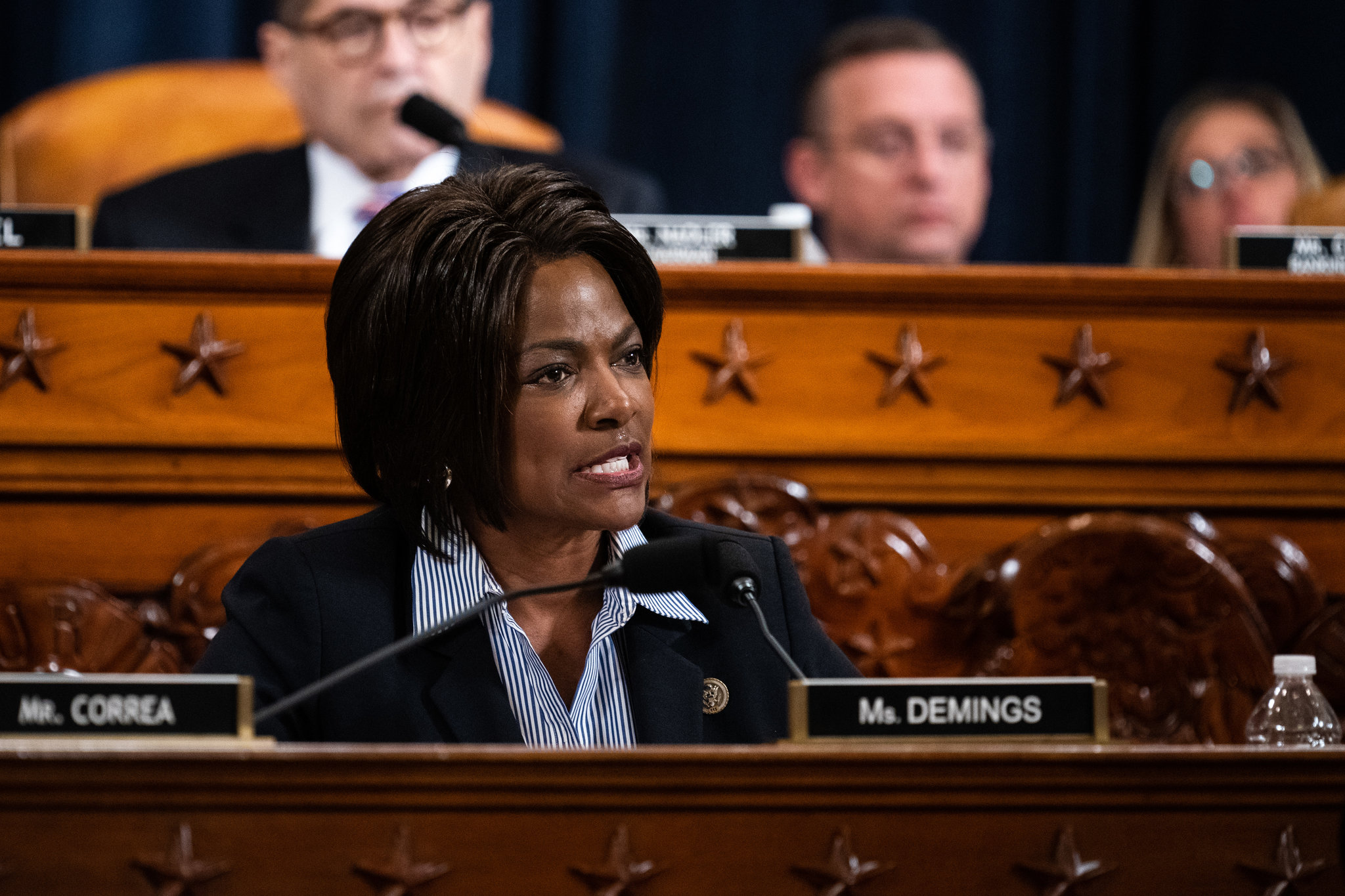 “The House of Representatives has passed a bill that reaffirms Congress’ commitment to media diversity and strategy of working with media organizations to better represent the American people,” Michael Balderston reported Dec. 9 for TVTechnology.
“The House of Representatives has passed a bill that reaffirms Congress’ commitment to media diversity and strategy of working with media organizations to better represent the American people,” Michael Balderston reported Dec. 9 for TVTechnology.
“The bill, H. Res 549, was introduced in 2019 by Rep. Val Demings (D-Fla.) (pictured, credit: New York Times). [Its] official wording is: ‘[A] resolution reaffirming the commitment of the House of Representatives to media diversity … and pledges to work with media entities and diverse stakeholders to develop common ground solutions to eliminate barriers to media diversity.’
“The resolution passed the House with a voice vote. . . .”
Stephen A. Smith to Host ‘Stephen A’s World’
 “Walt Disney Company announced last week during its investor day presentation that ESPN’s streaming platform ESPN+ will [produce] new original series and studio shows in the coming months,” A.J. Katz reported Wednesday for TVNewser.
“Walt Disney Company announced last week during its investor day presentation that ESPN’s streaming platform ESPN+ will [produce] new original series and studio shows in the coming months,” A.J. Katz reported Wednesday for TVNewser.
“The company is launching Stephen A’s World, a new, original program featuring the insights and opinions of top ESPN on-air personality Stephen A. Smith (pictured) in January.
“This, in addition to his current roles as a featured commentator along with Max Kellerman, on ESPN’s mid-morning program First Take; as host of a weekly NBA pregame show on Wednesdays during the season; as host of SportsCenter with Stephen A. Smith, as well as several other SportsCenter specials throughout the year. [And] if that’s not enough, Smith is a regular contributor across the network’s studio programming surrounding marquee events. . . .”
Juan Williams’ Lessons From Catching COVID-19
 “Over the years, I have rarely shared personal stories. Readers come here to read into the theater of politics,” Fox News’ Juan Williams (pictured) wrote Monday in The Hill, describing his life under quarantine after testing positive for COVID-19.
“Over the years, I have rarely shared personal stories. Readers come here to read into the theater of politics,” Fox News’ Juan Williams (pictured) wrote Monday in The Hill, describing his life under quarantine after testing positive for COVID-19.
“My general rule is to only open personal wounds when there is a clear lesson to offer.
“The lesson here is to take this virus seriously — wear the mask, wash your hands, keep your social distance. And reach out to people hit with it.
“The coronavirus doesn’t care whether you are a liberal or conservative.
“We are all in this together. Our best hope is to take care of each other.
“Merry Christmas.”
Separately, the Tampa Bay Times published Thursday a 3,898-word project, “Two weeks. Three lost. One Florida family ravaged by coronavirus,” by Claire McNeill, about the COVID losses suffered by Boyzell Hosey, its
deputy editor for photo/multimedia.
“Boyzell wiped his glasses and nodded as the bishop talked of trusting the hand of God. It was Nov. 21. His elderly father had died on the 5th. His older brother had passed on the 15th. Soon there would be a memorial for his brother-in-law, Bob, who had died in between. Boyzell himself had fought COVID-19 and was only a week out of the hospital, where his sister had gone for treatment, too. . . .”
The story is part of a collaboration with the PBS series “Frontline” through its Local Journalism Initiative, which is funded by the John S. and James L. Knight Foundation and the Corporation for Public Broadcasting.
- Jenice Armstrong, Philadelphia Inquirer: Community’s outpouring to 7-year-old COVID-19 survivor is what the holidays are all about (Dec. 9)
- Derrick Z. Jackson, grist.org: 2020 unmasked the truth about ‘all lives matter’
- Derrick Z. Jackson, Union of Concerned Scientists: Having Faith in Science: Why Loving Thy Neighbor Means Refraining from In-Person Worship
- Mark K. Miller TVNewsCheck: News Media Groups Request Front-line Journalists Be Included in Early Vaccine Deployment (Dec. 8)
- Chris Sutcliff, Media Voices Podcast: Hear ye, hear ye: 2020 was the year of the audio renaissance, proving resilient to the pandemic
- Ed Yong, The Atlantic: How Science Beat the Virus — And what it lost in the process
H.R. Professional Succeeds Days in Philadelphia
“Jameel Rush, a Philadelphia-based human resources professional, has been named The Philadelphia Inquirer’s vice president of Diversity, Equity, and Inclusion, the company announced Thursday,” Kelly O’Shea reported for the Inquirer.
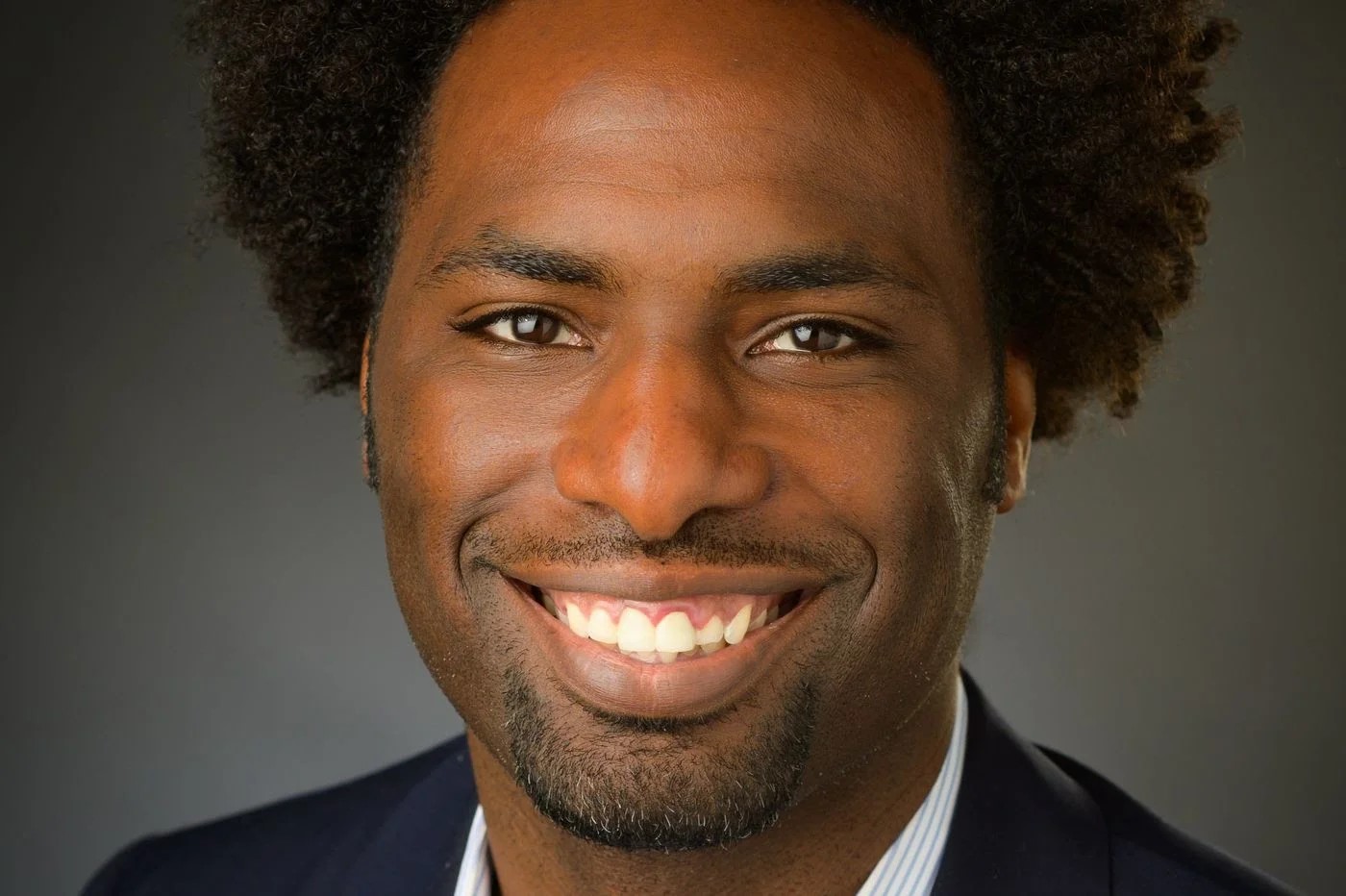 “Rush (pictured), 35, will play a leading role in supporting DEI efforts across all aspects of The Inquirer, including the newsroom. He also will serve an instrumental role in community outreach.
“Rush (pictured), 35, will play a leading role in supporting DEI efforts across all aspects of The Inquirer, including the newsroom. He also will serve an instrumental role in community outreach.
Like Michael Days, who is retiring from the position and the news organization, Rush is a Philadelphia native. He is vice president of global diversity and inclusion at Aramark, known chiefly as a food-service company. He led the company’s DEI strategy.
Rush said in a news release that he is “passionate about seeing that equity is represented everywhere,. I’m proud to join The Philadelphia Inquirer and contribute to the meaningful impact that local journalism can have on our communities.’
In July, Bill Ross, executive director of the News Guild in Philadelphia, TNG-CWA Local 38010, told Journal-isms, “We believe the VP of Diversity and Inclusion is just a rebranding of the many roles and responsibilities Michael Days has fulfilled for many years. Without the authority to make decisions and drive change, it is a worthless title.”
Days countered, “Making real and lasting change at an organization goes beyond one person or one role. It takes commitment at every level. I am proud to be part of a leadership team that takes this work seriously, and I have always found my contributions to be real and valued.”
Allen Howard Dies, Pioneering Cincinnati Reporter
“Former Enquirer reporter and trailblazing Black journalist Allen Howard (pictured) died Wednesday at his home in Cold Spring, Ky., in the presence of his wife, Deborah. He was 88,” Randy Tucker reported Friday for the Cincinnati Enquirer.
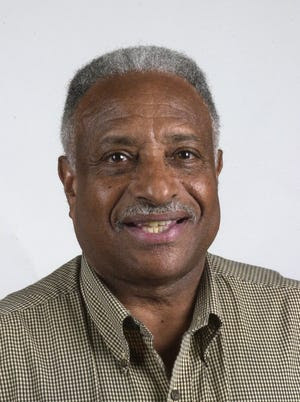 Tucker continued, “He came to Ohio in 1962 and worked as a reporter and photographer at the Cleveland Call & Post, a Black-owned weekly formed by the merger of the Cleveland Call and the Cleveland Post – two newspapers that had been serving the Black community since the early 1900s.
Tucker continued, “He came to Ohio in 1962 and worked as a reporter and photographer at the Cleveland Call & Post, a Black-owned weekly formed by the merger of the Cleveland Call and the Cleveland Post – two newspapers that had been serving the Black community since the early 1900s.
“He later worked as managing editor at the Call & Post’s branch office in Cincinnati before joining The Enquirer just before race riots broke out in cities across the country, including Cincinnati.
” ‘Allen was an asset that The Enquirer really hadn’t had previously,’ said Luke Feck, former Enquirer editor. ‘We were limited in our connections to the Black community, and he was perfect for what we needed to do at that time.’ “
Tucker also wrote, “His ‘Good Things Happening’ column highlighted the positive news going on in local communities and was among the most-read items in the newspaper.
” ‘For many years, Allen was The Enquirer’s connection to the diverse communities of Greater Cincinnati, telling stories that might not otherwise have been told but for his great reporting,’ said Kevin Aldridge, a friend and The Enquirer’s editorial page editor. ‘I learned so much about journalism and Cincinnati from Allen.’ “
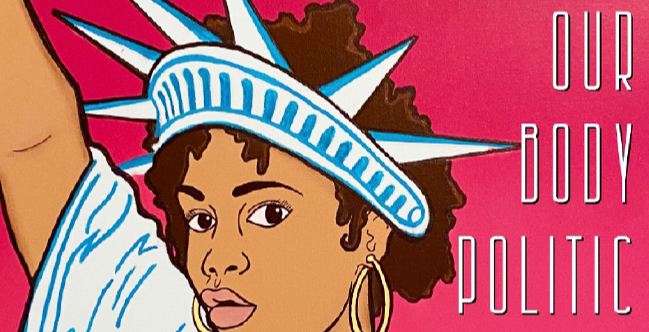
Farai Chideya says, this is “”both a success story and a failure story. Radio show hot launch = success. Why we didn’t have access to the resources to stand this up earlier = failure of the market to fund women of color.”
Podcast by and for Women of Color Taking Off
“I pitched Our Body Politic starting in late January as a half hour podcast by/for/about women of color, covering politics, community, media and health,” according to Farai Chideya, veteran journalist and now journalism program officer at the Ford Foundation. “When the pandemic hit, interest evaporated. After George Floyd was killed, interest sparked. As I was in conversation with for-profit podcast companies, I also tweeted out that I was pitching this show and wanted to bring it to market, seeking other ideas from my Twitter followers @farai.
“And something magical happened,” Chideya continued Friday in an email. “KQED Chief Content Officer Holly Kernan, who I’d worked with years ago at KALW, reached out. We started conversations with Paul Bennun of KCRW and Kristen Muller of KPCC. The three stations and I all fundraised, very quickly, to stand up the show. We signed a contract with the badass Lantigua Williams & Co on September 13 and had our first episode on the air two weeks later!
“That is both a success story and a failure story. Radio show hot launch = success. Why we didn’t have access to the resources to stand this up earlier = failure of the market to fund women of color. (That said, there are people landscaping how to improve the funding pipeline. But any change requires for-profit investors and nonprofit donors to step up.)
The podcast site lists 14 episodes and reads, “Created and hosted by award-winning journalist Farai Chideya, Our Body Politic is unapologetically centered on reporting on not just how women of color experience the major political events of today, but how they’re impacting those very issues. Weekly episodes feature in-depth conversations about the economy, health, politics, education, the environment, and the most prescient issues — because all issues are women’s issues. Tune in every Friday everywhere you listen to podcasts, and on public radio stations around the country. Presented by KCRW, KPCC, and KQED.”
Chideya added:
“Juleyka Lantigua-Williams is the executive producer… Paulina Velasco of Lantigua Williams & Co. is the show senior producer.
“Errin Haines of The 19th is our key political contributor, and we’re expanding her role into leading a roundtable each week.
“Jess Morales Rocketto of the National Domestic Worker’s Alliance (former presidential campaign strategist) is joining in Jan as a political contributor
“Mutale Nkonde, CEO of A.I. for the People, is our tech/disinformation contributor
“Casey Mendoza of Newsy is our entertainment business contributor
“Dr. Kavita Trivedi, epidemiologist, is our medical contributor
“Ruth Umoh, who covers the business of diversity and inclusion (and race and finance) for Forbes is our business contributor.”
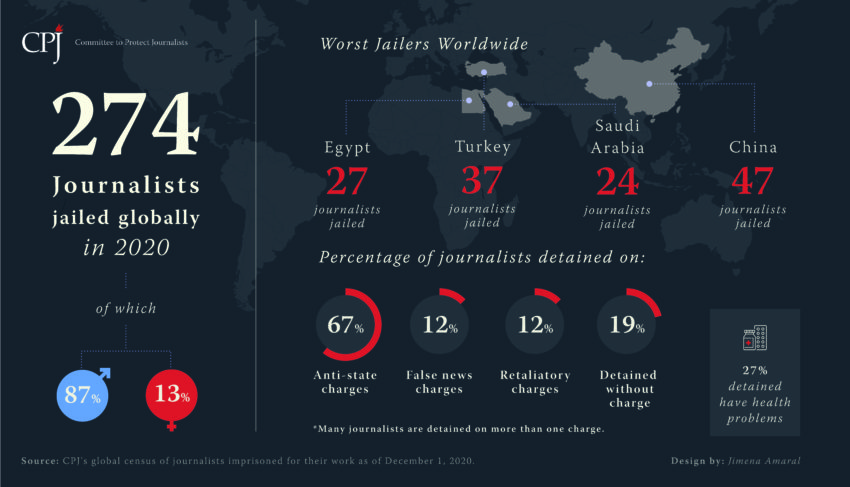
“Lack of global leadership on democratic values – particularly from the United States, where President Donald Trump has inexhaustibly denigrated the press and cozied up to dictators such as Egyptian President Abdelfattah el-Sisi – has perpetuated the crisis.”
Record Number of Journalists Jailed Worldwide
“The number of journalists jailed globally because of their work hit a new high in 2020 as governments cracked down on coverage of COVID-19 or tried to suppress reporting on political unrest,” the Committee to Protect Journalists wrote Tuesday over a special report by Elana Beiser. “Authoritarians again took cover in anti-press rhetoric from the United States.”
Beiser wrote, “In its annual global survey, the Committee to Protect Journalists found at least 274 journalists in jail in relation to their work on December 1, 2020, exceeding the high of 272 in 2016. China, which arrested several journalists for their coverage of the pandemic, was the world’s worst jailer for the second year in a row.
“It was followed by Turkey, which continues to try journalists free on parole and arrest new ones; Egypt, which went to great lengths to keep custody of journalists not convicted of any crime; and Saudi Arabia. Countries where the number of jailed journalists rose significantly include Belarus, where mass protests have ensued over the disputed re-election of the long-time president, and Ethiopia, where political unrest has degenerated into armed conflict. . . .”
- Addis Standard, Ethiopia: Less Than Three Years After Declaring ‘New Era’, Ethiopia Is Back in the List of Countries Jailing Journalists. We Traced 33 Cases
- Marina Estarque and Silvia Higuera, LatAm Journalism Review: Latin American podcasts on femicide show systemic violence and institutional failures (Dec. 2)
- Paola Nalvarte, LatAm Journalism Review: International reporting project publishes five reports linking journalist deaths to drug cartel violence in Mexico
- Reporters Without Borders: RSF’s 2020 round-up: 35% rise in number of women journalists held arbitrarily
Short Takes
- The second round of the Google News Initiative’s North American Innovation Challenge is funding 33 projects that “look at diversity, equity and inclusion through many different lenses, all focused around the communities they serve,” LaToya Drake, head of media representation for the initiative, wrote Tuesday. “The Innovation Challenge received 215 applications from the US and Canada, and will fund 33 projects totaling $5.9 million. . . . “
 “A news assistant from Bloomberg News was detained by Chinese authorities on suspicion of endangering national security, the news agency said” on Dec. 11, Simone McCarthy reported for the South China Morning Post. “Haze Fan (pictured), a Chinese national who works in the Beijing bureau, was seen being escorted from her apartment building by plain clothes security officials on Monday [Dec. 7], and had last been in contact with an editor earlier that day. The Asian American Journalists Association “asks for Chinese authorities to be transparent of the charges against Fan and to ensure that her rights to legal assistance are upheld.”
“A news assistant from Bloomberg News was detained by Chinese authorities on suspicion of endangering national security, the news agency said” on Dec. 11, Simone McCarthy reported for the South China Morning Post. “Haze Fan (pictured), a Chinese national who works in the Beijing bureau, was seen being escorted from her apartment building by plain clothes security officials on Monday [Dec. 7], and had last been in contact with an editor earlier that day. The Asian American Journalists Association “asks for Chinese authorities to be transparent of the charges against Fan and to ensure that her rights to legal assistance are upheld.”
- “The Undefeated book imprint is in the works,” ESPN spokesman Mac Nwulu confirmed Thursday. “We do not have any details to share externally at this time.” Karin Berry, Undefeated general editor, broke the news Sunday at the Journal-isms Roundtable. (video, 1:03) ESPN announced in March that it “plans to explore a new business plan for The Undefeated, its site devoted to exploring sports, culture and race that will expand the outlet to other parts of the sports-media outlet’s parent company. Walt Disney,” as Brian Steinberg reported then for Variety.
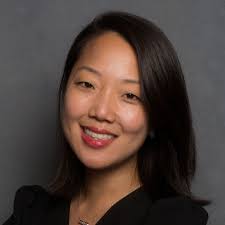 Michelle Ye Hee Lee ( pictured), national president of the Asian American Journalists Association, will become The Washington Post’s Tokyo bureau chief next summer, the Post announced Dec. 11. Lee has covered money and influence for the Post’s Political Investigations and Enterprise team on the newspaper’s national desk.
Michelle Ye Hee Lee ( pictured), national president of the Asian American Journalists Association, will become The Washington Post’s Tokyo bureau chief next summer, the Post announced Dec. 11. Lee has covered money and influence for the Post’s Political Investigations and Enterprise team on the newspaper’s national desk.
- Report for America has selected 64 new local news organizations as host newsroom partners — expanding its support to more than 200 newsrooms across the country for 2021-2022. “View all open newsroom positions, at new and current newsrooms,” the organization urged, listing the positions. Report for America is “a national service program that places journalists into local newsrooms to report on under-covered issues and communities.”
- “We are ready to take the first step to digitize and archive our newspapers, videos and other treasured materials,” Dorothy Tucker, president of the National Association of Black Journalists, announced Saturday at the organization’s virtual 45th anniversary celebration (video, 7:29). Journal-isms began in 1991 in the NABJ Journal, one of the publications that is to be digitized. The “Journal” in the name stood for “NABJ Journal.” Also during the program, DeWayne Wickham, an NABJ co-founder, former NABJ president and honoree at the event, said the organization’s history provides so many rich moments that “the NABJ story should be a documentary.”
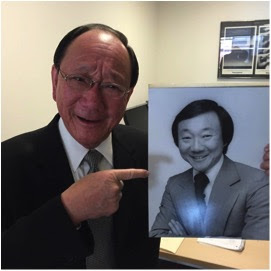 Vic Lee (pictured), a Bay Area TV journalism fixture for nearly 50 years who retired in January from KGO, received the Lifetime Achievement Award at the Asian American Journalists Association’s 2020 Awards & Holiday Celebration on Dec. 11. (video)
Vic Lee (pictured), a Bay Area TV journalism fixture for nearly 50 years who retired in January from KGO, received the Lifetime Achievement Award at the Asian American Journalists Association’s 2020 Awards & Holiday Celebration on Dec. 11. (video)
ESPN announces @SportsCenter anchor lineup for the new year
∙ @sagesteele to co-anchor the Noon ET edition, & will add a new ESPN+ interview program to her slate
∙ Beginning in February, @elleduncanESPN will co-anchor the 6p ET editionMore: https://t.co/2XWCcC4Zdv pic.twitter.com/g4fL2quyMn
— ESPN PR (@ESPNPR) December 15, 2020
- “Sage Steele will no longer be anchoring the almighty daily 6 p.m. edition of SportsCenter,” Carron J. Phillips reported Tuesday for Deadspin. “According to ESPN: ‘Steele will move to the noon ET edition of SportsCenter as co-anchor after the College Football Playoff and will add a new periodic ESPN+ interview program to her slate.’ Steele is being replaced by Elle Duncan — the Black woman she recently tried to get fired, or at least demoted. . . .”
 Gerry Shih (pictured), who has reported from China for the Associated Press and The Washington Post over the last six years, will become the Post’s India bureau chief, effective in June, the Post announced Dec. 11. “After effectively being expelled from China in March, when Gerry was among a dozen U.S. correspondents who were stripped of accreditation because of tensions between Beijing and Washington, he has been covering China from a base elsewhere in Asia while serving as interim Beijing bureau chief,” the announcement said.
Gerry Shih (pictured), who has reported from China for the Associated Press and The Washington Post over the last six years, will become the Post’s India bureau chief, effective in June, the Post announced Dec. 11. “After effectively being expelled from China in March, when Gerry was among a dozen U.S. correspondents who were stripped of accreditation because of tensions between Beijing and Washington, he has been covering China from a base elsewhere in Asia while serving as interim Beijing bureau chief,” the announcement said.
- ESPN commentator Howard Bryant is not among those cheering Wednesday’s decision by Major League Baseball Commissioner Rob Manfred to elevate seven Negro League players to major league status. “I think, if there’s one thing we know about baseball, is the numbers are always sacred,” Bryant told John Yang on the “PBS NewsHour.” “And I don’t think that you can — I don’t you can retrofit this. The — you’re not looking at a mirror, John. You’re not looking at, well, OK, from 1920 to 1948, there was the American League and the National League on the white side and then there was the Negro Leagues on the other side. That’s not what took place. What segregation did to Black players is, it destroyed them. It created a permanent inferiority that you cannot retrofit 100 years later. You had inferior conditions. You had tattered record books. You don’t know how many games guys played. . . .”
 In Philadelphia, “Elizabeth Flores (pictured) has been named Vice President of News for NBC10 and Telemundo62,” NBC announced Dec. 7. “In this role, Flores will be responsible for leading the on-air and online news operations for the NBC and Telemundo owned TV stations that serve English and Spanish-speaking viewers in the Greater Philadelphia region. Flores will report to Ric Harris, President and General Manager of NBC10 and Telemundo62. She will be relocating to the Philadelphia area from New York and will start on January 11, 2021.” Flores succeeds Anzio Williams, who left the station in August after eight years to take a newly created job where he’ll “be responsible for developing and implementing a comprehensive strategy that will make diversity and inclusion issues a top priority” for NBC-owned stations.
In Philadelphia, “Elizabeth Flores (pictured) has been named Vice President of News for NBC10 and Telemundo62,” NBC announced Dec. 7. “In this role, Flores will be responsible for leading the on-air and online news operations for the NBC and Telemundo owned TV stations that serve English and Spanish-speaking viewers in the Greater Philadelphia region. Flores will report to Ric Harris, President and General Manager of NBC10 and Telemundo62. She will be relocating to the Philadelphia area from New York and will start on January 11, 2021.” Flores succeeds Anzio Williams, who left the station in August after eight years to take a newly created job where he’ll “be responsible for developing and implementing a comprehensive strategy that will make diversity and inclusion issues a top priority” for NBC-owned stations.
- C-SPAN3, “American History TV,” has this weekend listing for Saturday at 8 pm,. and midnight ET: “Lectures in History: Post-Civil Rights Era Music: Flagler College professor Michael Butler teaches a class about music in the post-civil rights era, highlighting artists James Brown, Marvin Gaye, George Clinton and others. He describes how in the 1970s African American artists in genres such as funk and soul emphasized a black cultural identity in their music.”
 “Edgardo del Villar (pictured), news anchor of the New Jersey-New York City area Telemundo 47 station, died at his Bergen County, New Jersey, home Sunday following a two-year battle with brain cancer, the station, also known as WNJU, has announced,” Greg Evans reported Tuesday for Deadline. “He was 51.” Veronica Villafañe wrote Sunday on her Media Moves site, “Del Villar . . . underwent surgery in August 2019. He was off the air for several months, but returned to the anchor desk in November of last year. . . .”
“Edgardo del Villar (pictured), news anchor of the New Jersey-New York City area Telemundo 47 station, died at his Bergen County, New Jersey, home Sunday following a two-year battle with brain cancer, the station, also known as WNJU, has announced,” Greg Evans reported Tuesday for Deadline. “He was 51.” Veronica Villafañe wrote Sunday on her Media Moves site, “Del Villar . . . underwent surgery in August 2019. He was off the air for several months, but returned to the anchor desk in November of last year. . . .”
- The Buffalo News editorial board is supporting a proposal to rename Niagara Falls, N.Y., schools for Black leaders. “To give minority children role models of success is valuable to everyone, whether the buildings are named for local Black Americans who have made a difference in their communities or national figures making their mark on a larger stage. The lesson can be life changing,” the board wrote Dec. 11. “Names such as Mary McLeod Bethune, Dr. Charles Richard Drew, John Lewis, Rosa Parks or Dorothy Height are just some examples. There are many others whose names should be considered in a school district where 35% of students are Black. . . .”
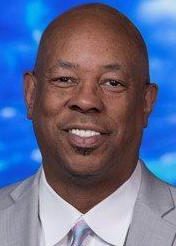 “After more than 40 years of bringing the news on the air, Art Holliday (pictured) is finally getting kicked upstairs,” Joe Holleman wrote Tuesday for the St. Louis Post-Dispatch. “Starting on Jan. 4, Holliday will be the acting news director at KSDK (Channel 5), where he has worked for more than 40 years.” In 2018, the Greater St. Louis Association of Black Journalists recognized Holliday as a Living Legend. “While his appointment is interim, Holliday is a candidate for the permanent role while a national search is underway,” the station said.
“After more than 40 years of bringing the news on the air, Art Holliday (pictured) is finally getting kicked upstairs,” Joe Holleman wrote Tuesday for the St. Louis Post-Dispatch. “Starting on Jan. 4, Holliday will be the acting news director at KSDK (Channel 5), where he has worked for more than 40 years.” In 2018, the Greater St. Louis Association of Black Journalists recognized Holliday as a Living Legend. “While his appointment is interim, Holliday is a candidate for the permanent role while a national search is underway,” the station said.
- “
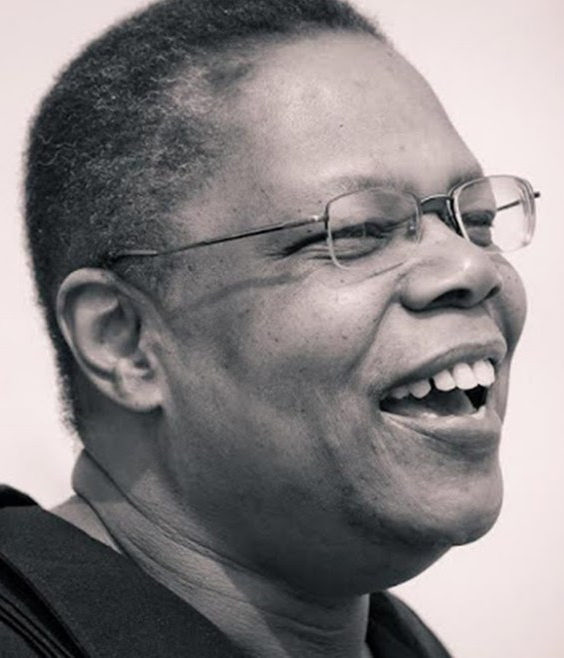 Glenn Reedus (pictured} will be leading the Chicago Reporter as Interim Editor and Publisher,” the newspaper announced Monday. “He comes to the Reporter with decades of experience as a journalist, with deep roots as a reporter at The Chicago Defender, Ebony Magazine, and the Chicago Crusader covering Black and Brown neighborhoods and issues like police brutality, poverty and politics. He has served as Executive Editor of the Chicago Defender and Managing Editor-Writer for the Chicago Crusader Newspaper from 2010-2014. He’s is currently the Publisher/Founder of DePriest Voters Chronicles and Beyond, providing coverage and analysis about politics, government and civic engagement in the 17 primarily African-American wards in Chicago. . . .” The Reporter was “founded in 1972 by John A. McDermott to measure Chicago’s progress toward racial equality as the civil rights era ended.”
Glenn Reedus (pictured} will be leading the Chicago Reporter as Interim Editor and Publisher,” the newspaper announced Monday. “He comes to the Reporter with decades of experience as a journalist, with deep roots as a reporter at The Chicago Defender, Ebony Magazine, and the Chicago Crusader covering Black and Brown neighborhoods and issues like police brutality, poverty and politics. He has served as Executive Editor of the Chicago Defender and Managing Editor-Writer for the Chicago Crusader Newspaper from 2010-2014. He’s is currently the Publisher/Founder of DePriest Voters Chronicles and Beyond, providing coverage and analysis about politics, government and civic engagement in the 17 primarily African-American wards in Chicago. . . .” The Reporter was “founded in 1972 by John A. McDermott to measure Chicago’s progress toward racial equality as the civil rights era ended.”
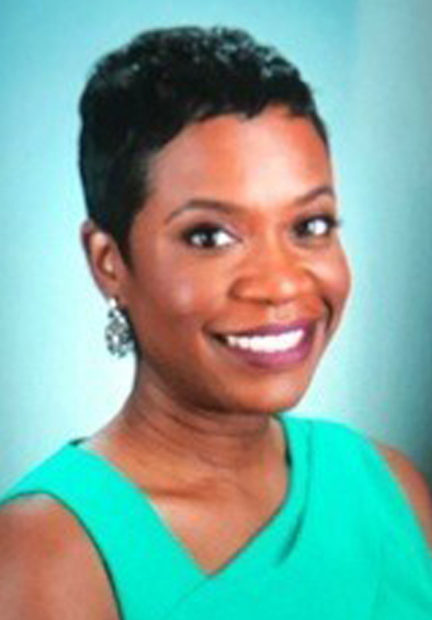
 Bervette Carree (pictured} has been named ABC11/WTVD-TV Raleigh Durham’s news director, effective Jan. 11, the North Carolina station announced Tuesday. “Carree is joining ABC11 from WXIA-TV, NBC’s affiliate in Atlanta, Georgia, where she has been an executive producer since 2019. She also managed the ‘Voices For Equality’ franchise, which includes content focused on underrepresented voices within the community. . . . Before working at WXIA-TV, she was an executive producer at WGHP-TV in High Point, North Carolina, where she played an integral role in revamping a four-and-a-half-hour morning show.
Bervette Carree (pictured} has been named ABC11/WTVD-TV Raleigh Durham’s news director, effective Jan. 11, the North Carolina station announced Tuesday. “Carree is joining ABC11 from WXIA-TV, NBC’s affiliate in Atlanta, Georgia, where she has been an executive producer since 2019. She also managed the ‘Voices For Equality’ franchise, which includes content focused on underrepresented voices within the community. . . . Before working at WXIA-TV, she was an executive producer at WGHP-TV in High Point, North Carolina, where she played an integral role in revamping a four-and-a-half-hour morning show.

- “The New York Times has just announced new appointments in Arts and Culture, including Maya Phillips and Jason Farago (critics at large), Matt Stevens (general assignment reporter) and Salamishah Tillet (contributing critic at large),” Broadway World reported Dec. 10. Phillips and Tillet are Black, Farago is white and in a same-sex marriage. and Stevens is Asian American. The day before the announcement, Tillet wrote for a Times year-end wrap-up under the headline, “When Culture Really Began to Reckon With White Privilege: Black artists didn’t wait around for institutional change. They are making it happen.”
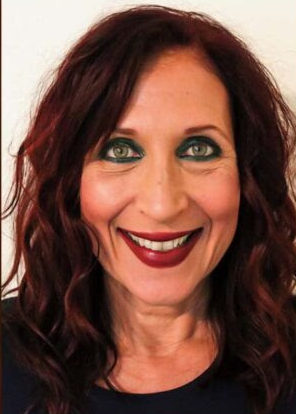 “Mc Nelly Torres (pictured}, an award-winning investigative journalist with more than two decades of experience, has joined the Center for Public Integrity as an editor,” the Center announced Thursday. “Torres will play a critical leadership role as Public Integrity realigns its journalism around covering inequality and serving and engaging diverse communities across the country. . . .”
“Mc Nelly Torres (pictured}, an award-winning investigative journalist with more than two decades of experience, has joined the Center for Public Integrity as an editor,” the Center announced Thursday. “Torres will play a critical leadership role as Public Integrity realigns its journalism around covering inequality and serving and engaging diverse communities across the country. . . .”
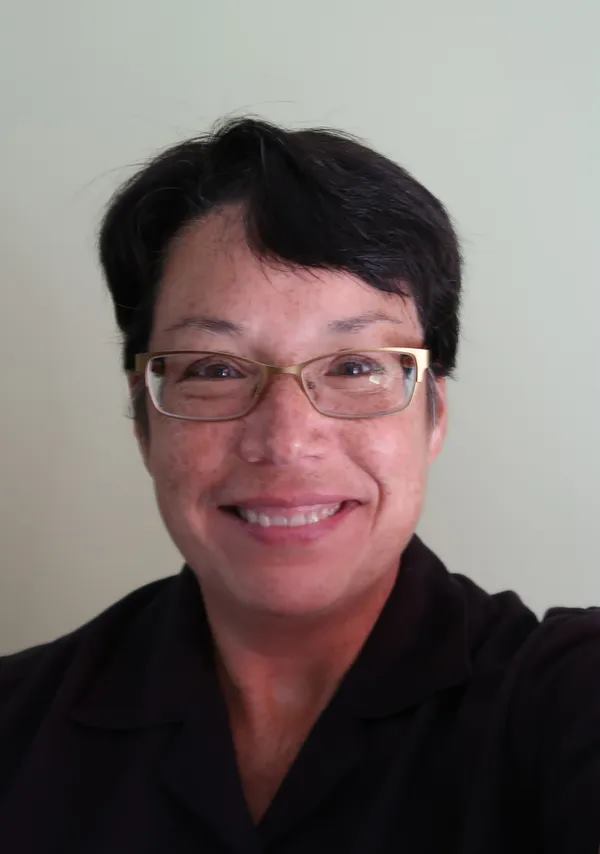 In Rochester, N.Y., a “Democrat and Chronicle photojournalist was called to testify before a grand jury Wednesday morning about her coverage of local protests earlier this year,” Sean Lahman reported Wednesday, updated Thursday, for the newspaper. “Tina MacIntyre-Yee (pictured), who has worked for the Rochester newspaper since 2002, received a subpoena to testify about images she captured during one of the protests. MacIntyre-Yee would not disclose which incident prompted the subpoena but said if asked she would verify that her images accurately captured what she saw and were not altered or manipulated before publication. She also indicated that if the questions went beyond that, she intended to invoke her rights as a journalist and decline to answer them. . . .”
In Rochester, N.Y., a “Democrat and Chronicle photojournalist was called to testify before a grand jury Wednesday morning about her coverage of local protests earlier this year,” Sean Lahman reported Wednesday, updated Thursday, for the newspaper. “Tina MacIntyre-Yee (pictured), who has worked for the Rochester newspaper since 2002, received a subpoena to testify about images she captured during one of the protests. MacIntyre-Yee would not disclose which incident prompted the subpoena but said if asked she would verify that her images accurately captured what she saw and were not altered or manipulated before publication. She also indicated that if the questions went beyond that, she intended to invoke her rights as a journalist and decline to answer them. . . .”
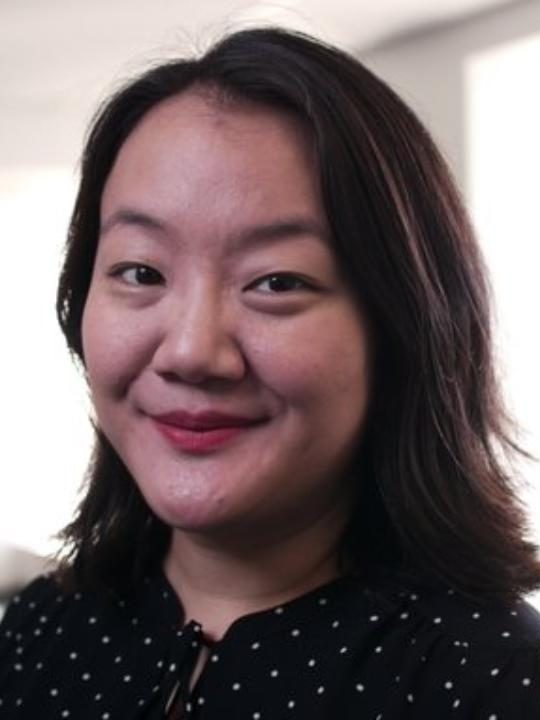 “Next week, I return to The Wall Street Journal in a new role as Deputy Editor of Culture, Training and Outreach,” Barbara Chai (pictured), wrote Dec. 11 on LinkedIn. “I’ll work with Brent Jones on the purposeful mission of expanding diversity & inclusion in the newsroom, both in talent and coverage.” She began her announcement, “Today is my last day at Publicis Sapient. I have loved my time at this digital consulting firm, working for and learning from Chief Marketing Officer Teresa Barreira, who empowered and trusted me to do something different. . . . “
“Next week, I return to The Wall Street Journal in a new role as Deputy Editor of Culture, Training and Outreach,” Barbara Chai (pictured), wrote Dec. 11 on LinkedIn. “I’ll work with Brent Jones on the purposeful mission of expanding diversity & inclusion in the newsroom, both in talent and coverage.” She began her announcement, “Today is my last day at Publicis Sapient. I have loved my time at this digital consulting firm, working for and learning from Chief Marketing Officer Teresa Barreira, who empowered and trusted me to do something different. . . . “
- “A federal magistrate judge in Miami has given the green light for a class-action labor law and sex and age discrimination lawsuit to go forward against CBS Broadcasting, Inc.,” Gary Nelson reported Dec. 10 for communitynewspapers.com. “The ruling could have nationwide impact on CBS’s 29 owned-and-operated television stations, known as CBS Television Stations, Inc.” The case was brought by former WFOR-CBS4 Miami freelance reporter Silva Harapetian (her legal name is Harapeti), and has been joined by two former employees, former WFOR per diem reporter, Tiani Jones, and former WCBS, Channel 2 New York per diem reporter, Don Champion. Both echo claims of excess work hours without benefits as alleged by Harapetian. . . .”
- “Foreign Policy, the award-winning US-based publication on global affairs, has appointed Ravi Agrawal as its Editor-in-Chief,” Lalit K Jha reported Nov. 25 for the Press Trust of India. “Agrawal has been promoted from his current position of Managing Editor. . ..”
- “Mae Cheng is appointed SVP, Barron’s Group,” Dow Jones announced Nov. 19. “In her new role, Mae will be responsible for driving growth for some of the fastest-growing businesses at Dow Jones. . . .At Mansion Global, she built out a fast-growing global digital presence as well as a custom content product line that spans digital, print and experiences. She also helped reinvigorate the print business, overseeing the launch of Mansion Global magazine and various commercially successful newsprint inserts. . . .”
The Ethiopian government has tried to prevent us from hearing from victims of its war. So @Lattif went to Sudan, where thousands fled. He is on the ground and on the front page. Thank you Abdi. pic.twitter.com/Xh5mBICMnQ
— Michael Slackman (@meslackman) December 10, 2020
- “Iran on Saturday executed an exiled journalist over his online work that helped inspire nationwide economic protests in 2017, a little more than a year after authorities tricked him into traveling to Iraq where he was abducted,” Jon Gambrell reported for the Associated Press. “Ruhollah Zam, 47, was one of several opposition figures successfully seized by Iranian intelligence operatives abroad in recent months as Tehran struggles under the weight of U.S. sanctions. . . .”
- “Malian authorities should immediately and unconditionally release journalists Adama Diarra and Seydou Oumar Traoré from custody and allow them to report freely,” the Committee to Protect Journalists said Dec. 8. CPJ also reported, “Both journalists are being held for alleged ‘outrage à magistrate’ (‘contempt of magistrates’), a form of criminal defamation of members of the country’s judicial system, according to reports . . . .”
To subscribe at no cost, please send an email to journal-isms+subscribe@groups.io and say who you are.
Facebook users: “Like” “Richard Prince’s Journal-isms” on Facebook.
Follow Richard Prince on Twitter @princeeditor
Richard Prince’s Journal-isms originates from Washington. It began in print before most of us knew what the internet was, and it would like to be referred to as a “column.” Any views expressed in the column are those of the person or organization quoted and not those of any other entity. Send tips, comments and concerns to Richard Prince at journal-isms+owner@
View previous columns (after Feb. 13, 2016).
View previous columns (before Feb. 13, 2016)
- Diversity’s Greatest Hits, 2018 (Jan. 4, 2019)
- Book Notes: Is Taking a Knee Really All That? (Dec. 20, 2018)
- Book Notes: Challenging ’45’ and Proudly Telling the Story (Dec. 18, 2018)
- Book Notes: Get Down With the Legends! (Dec. 11, 2018)
- Journalist Richard Prince w/Joe Madison (Sirius XM, April 18, 2018) (podcast)
- Richard Prince (journalist) (Wikipedia entry)
- February 2018 Podcast: Richard “Dick” Prince on the need for newsroom diversity (Gabriel Greschler, Student Press Law Center, Feb. 26, 2018)
- Diversity’s Greatest Hits, 2017 — Where Will They Take Us in the Year Ahead?
- Book Notes: Best Sellers, Uncovered Treasures, Overlooked History (Dec. 19, 2017)
- An advocate for diversity in the media is still pressing for representation, (Courtland Milloy, Washington Post, Nov. 28, 2017)
- Morgan Global Journalism Review: Journal-isms Journeys On (Aug. 31, 2017)
- Diversity’s Greatest Hits, 2016
- Book Notes: 16 Writers Dish About ‘Chelle,’ the First Lady
- Book Notes: From Coretta to Barack, and in Search of the Godfather
- Journal-isms’ Richard Prince Wants Your Ideas (FishbowlDC, Feb. 26, 2016)
- “JOURNAL-ISMS” IS LATEST TO BEAR BRUNT OF INDUSTRY’S ECONOMIC WOES (Feb. 19, 2016)
- Richard Prince with Charlayne Hunter-Gault,“PBS NewsHour,” “What stagnant diversity means for America’s newsrooms” (Dec. 15, 2015)
- Book Notes: Journalists Follow Their Passions
- Book Notes: Journalists Who Rocked Their World
- Book Notes: Hands Up! Read This!
- Book Notes: New Cosby Bio Looks Like a Best-Seller
- Journo-diversity advocate turns attention to Ezra Klein project (Erik Wemple, Washington Post, March 5, 2014)

